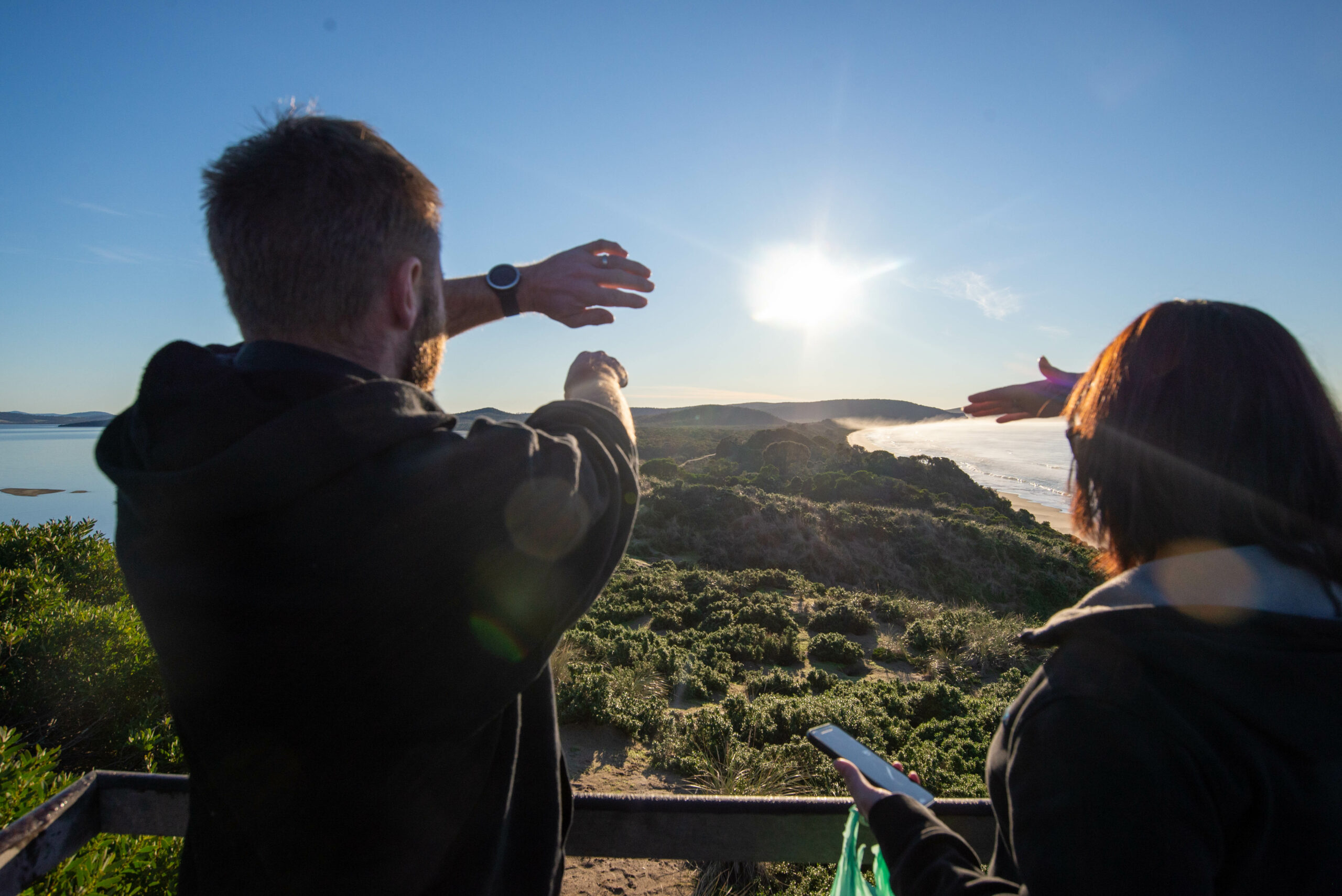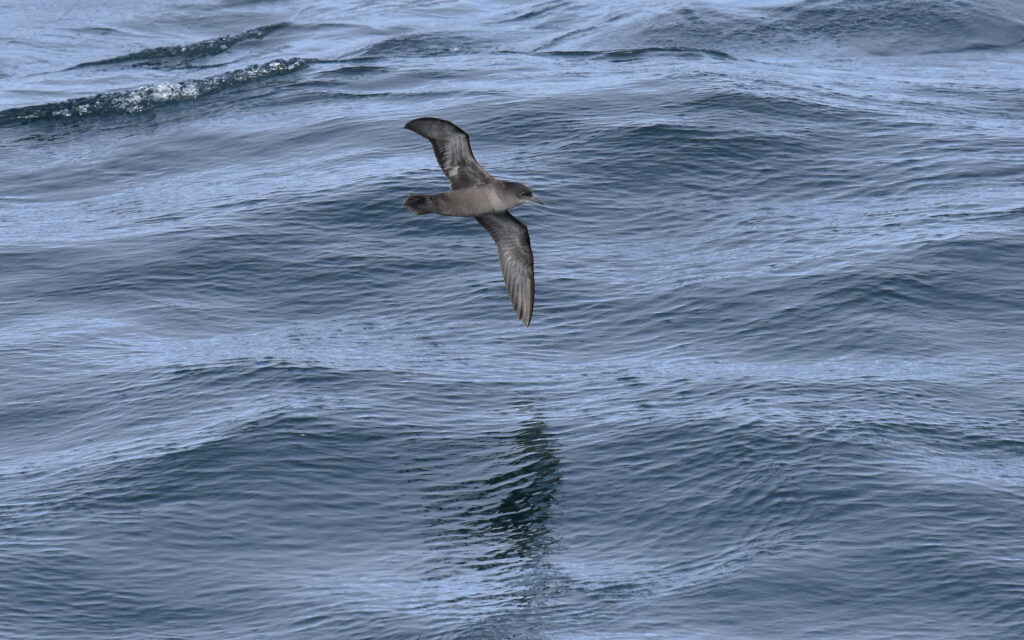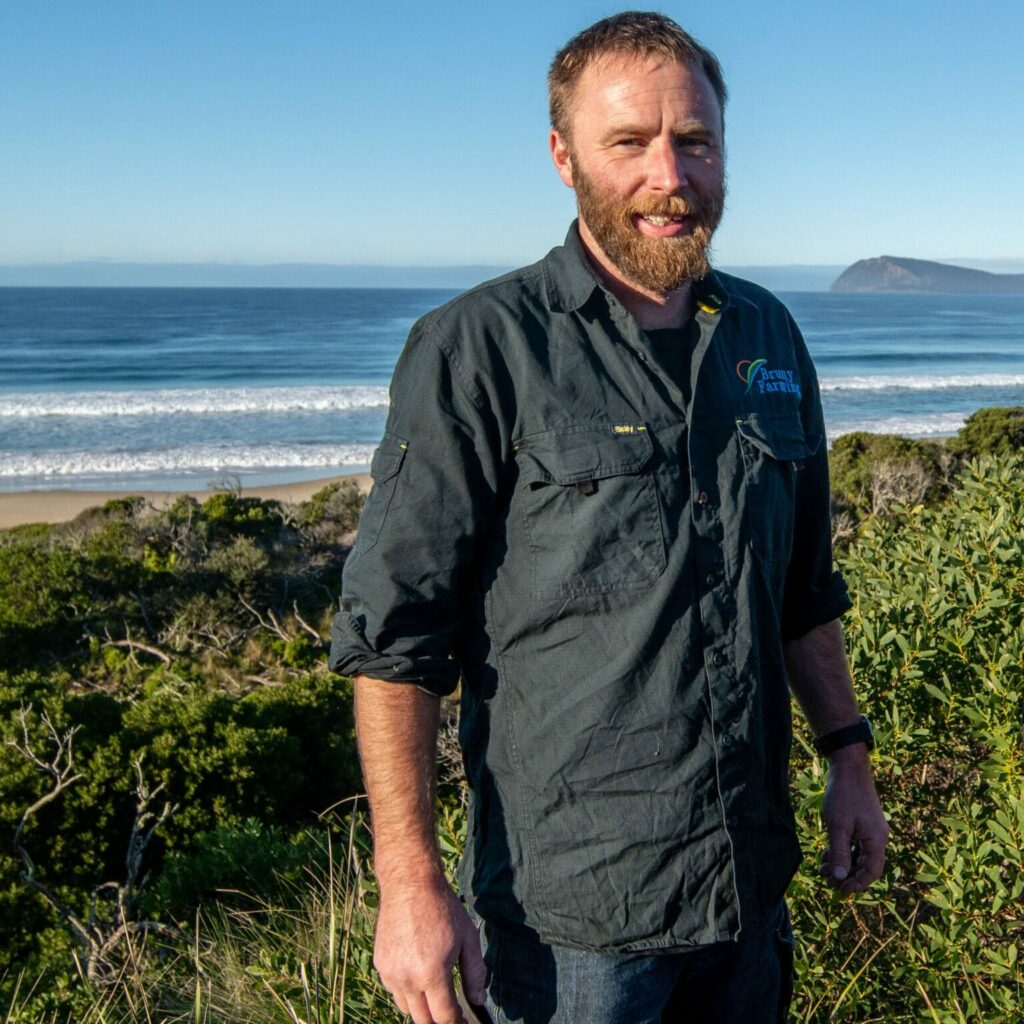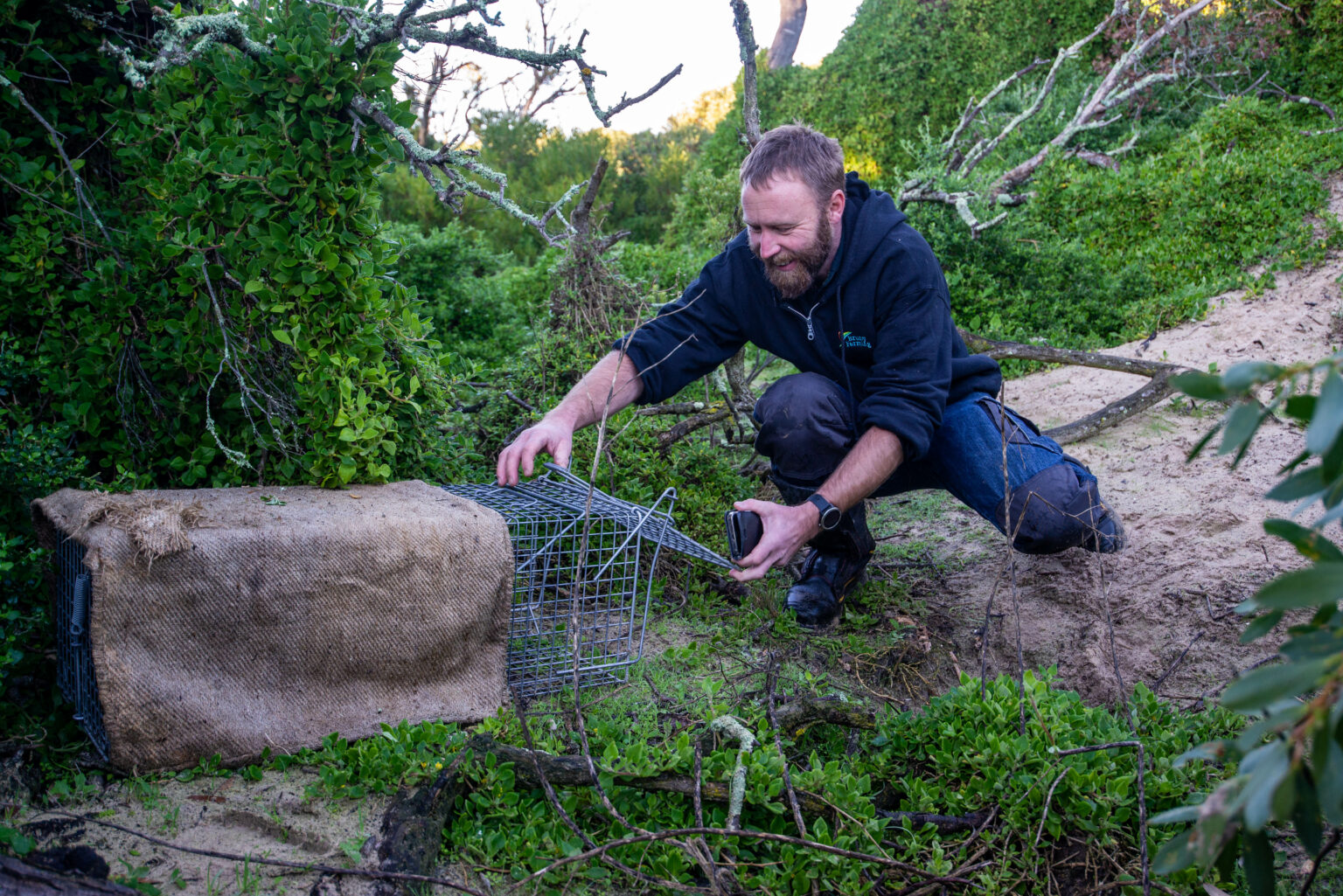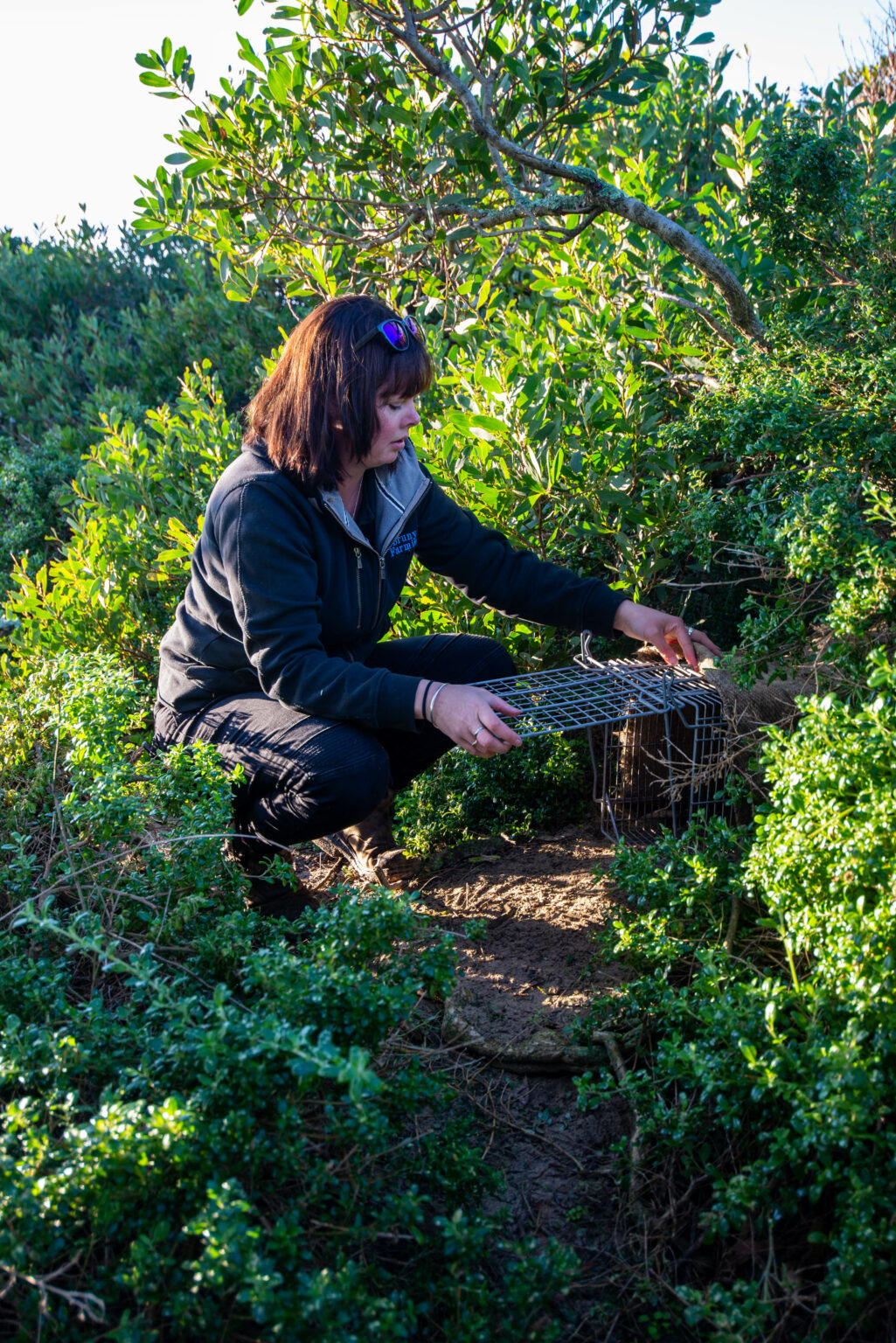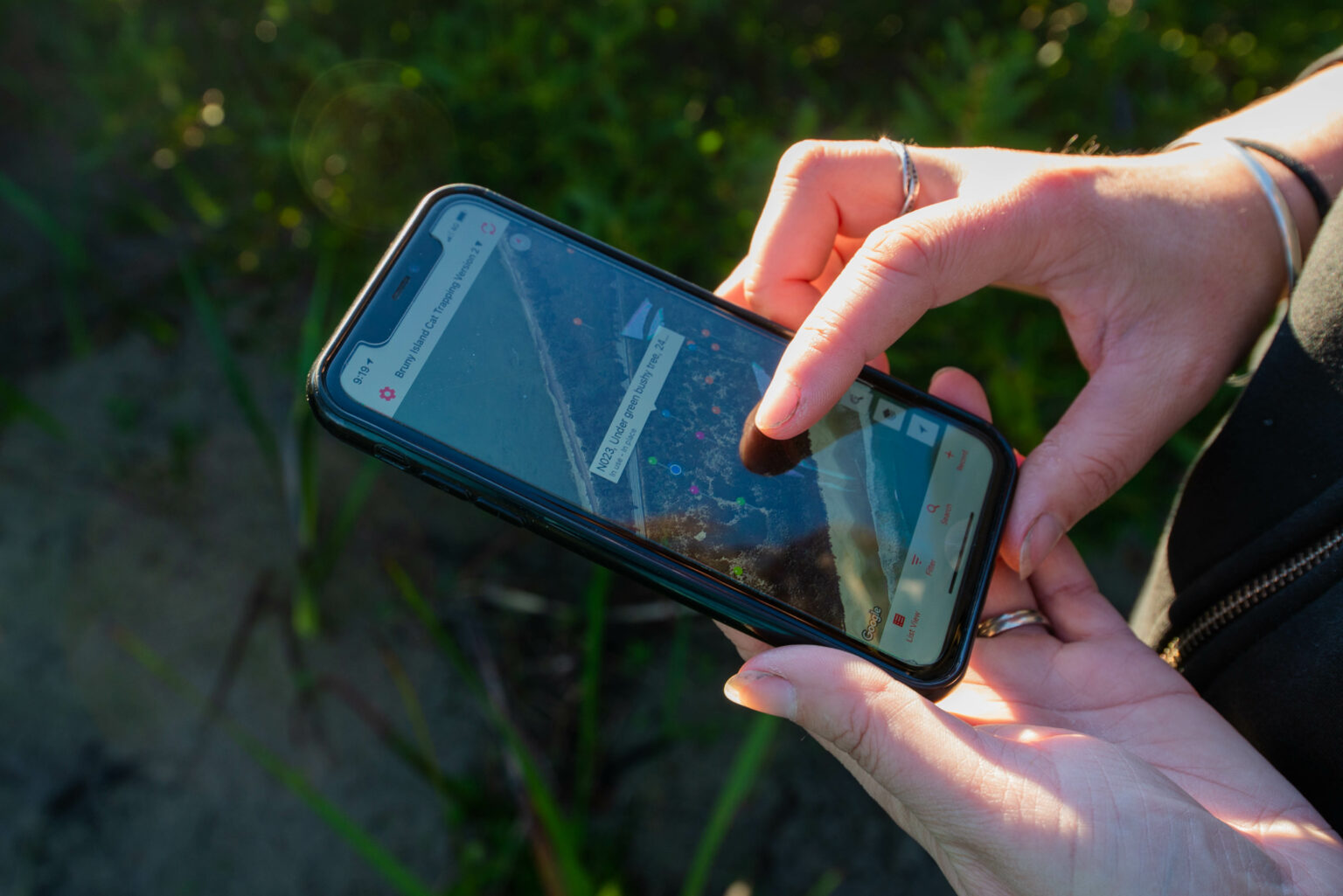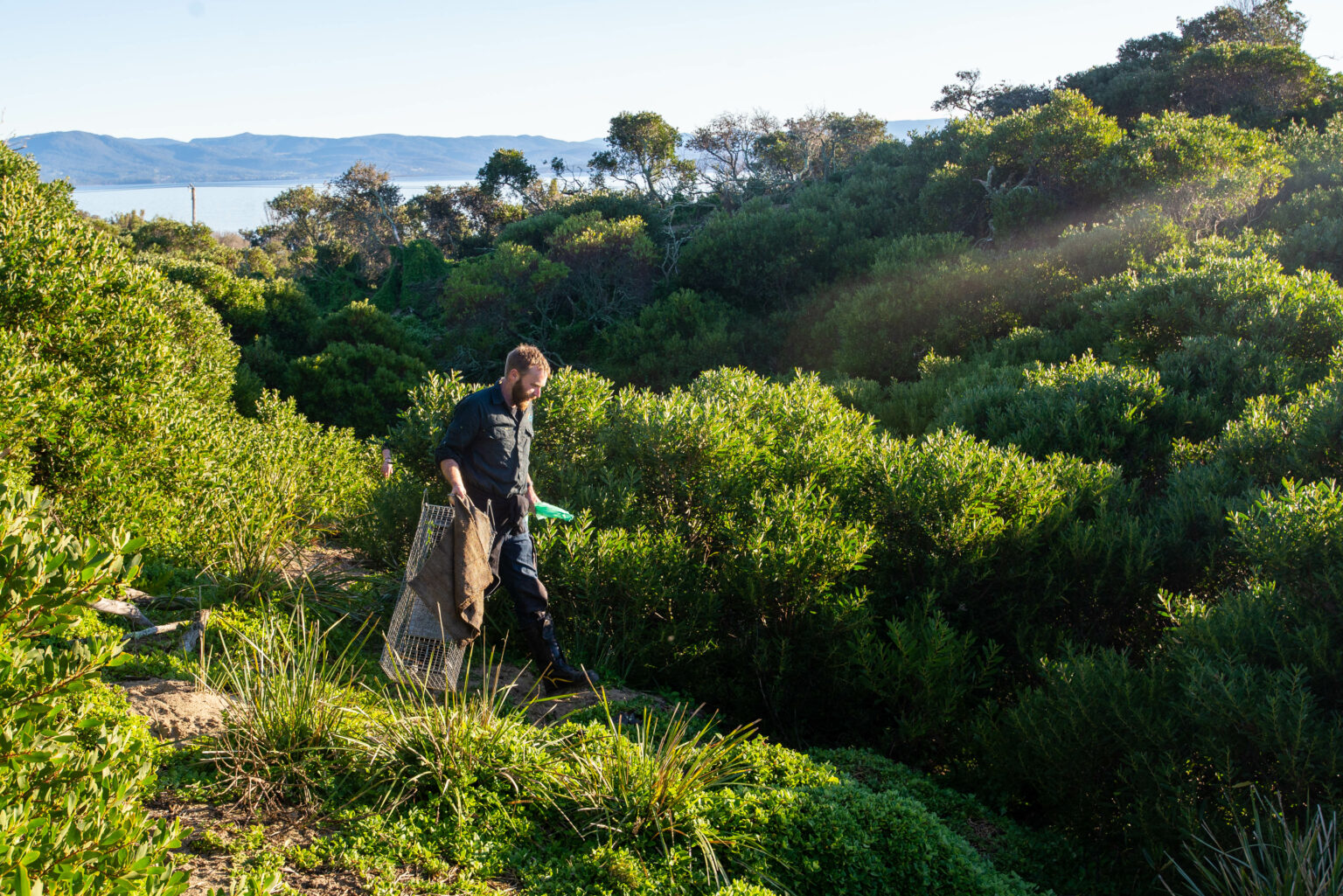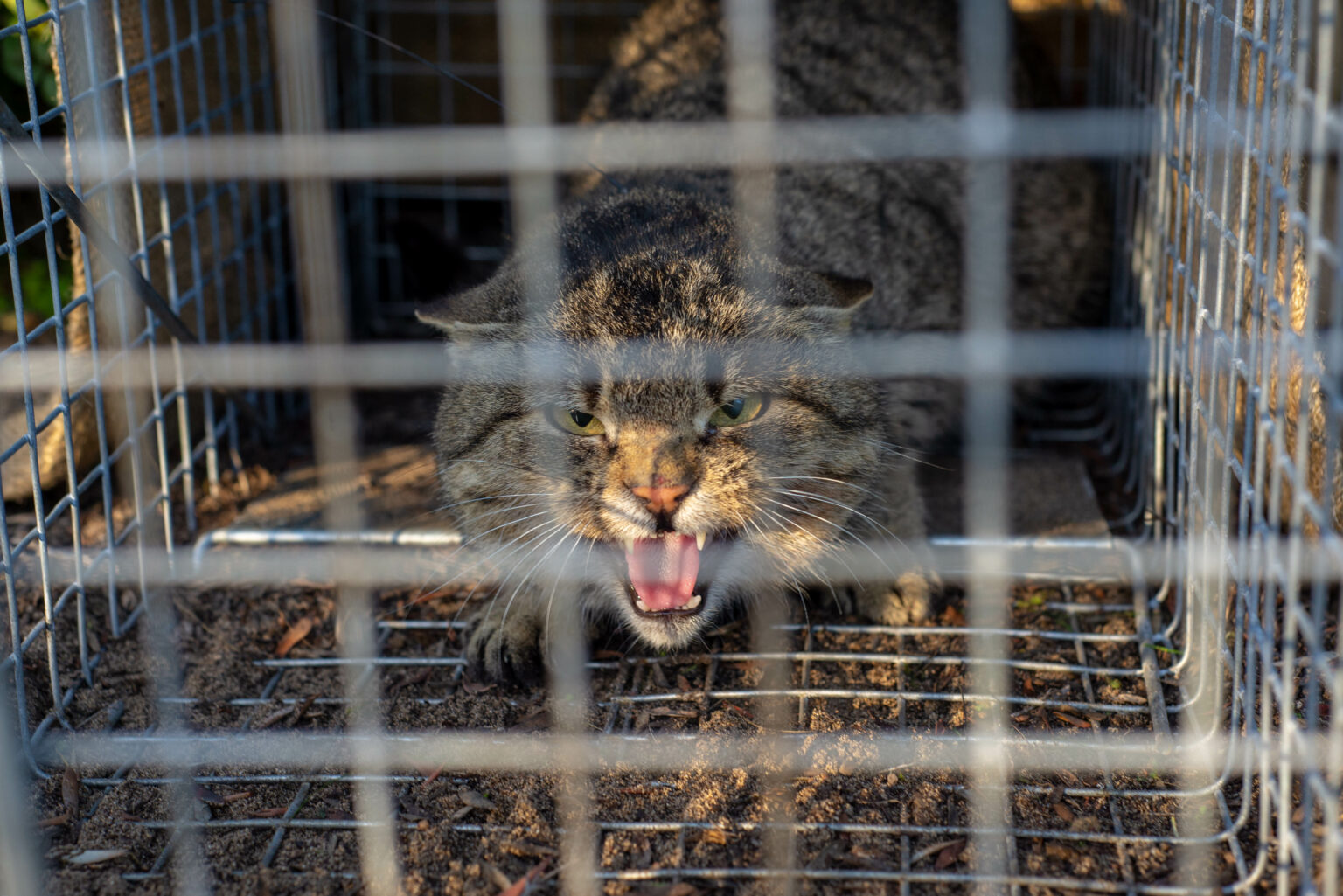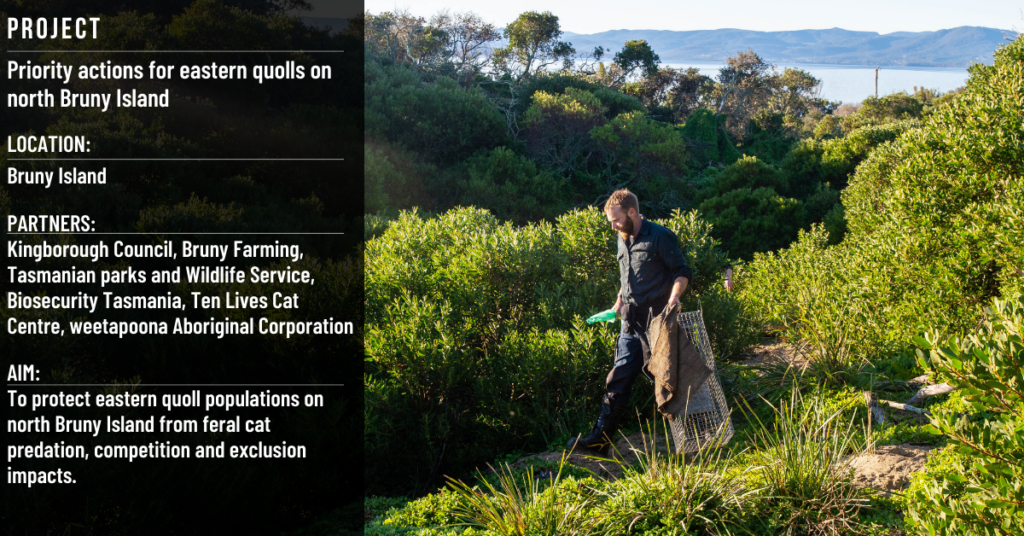
Feral cats have contributed to the extinction of at least 22 Australian mammal species since colonisation and are continuing to drive biodiversity declines across Australia. Removing cats on a landscape scale remains an ongoing challenge in Australian conservation. As a result, islands, particularly those with threatened species such as Bruny Island, are increasingly being valued as potential safe havens for biodiversity. Island based cat management programs that work towards eradication can have lasting positive outcomes for wildlife in these landscapes.
BRUNY ISLAND – A BIODIVERSITY HOTSPOT
Bruny Island – a 362km2 stretch of land situated off the south-east coast of Tasmania – is a mixed landscape of reserves, residential land, and farming areas. The island is regarded as an important stronghold for the endangered Eastern Quoll and is also home to critically endangered Swift Parrots, Forty-spotted Pardalote, as well as colonies of Little Penguins and Short-tailed Shearwaters.
Under the Threatened Species Strategy, the Australian Government identified Bruny Island as one of five Australian islands for potential cat eradication. In 2020, NRM South embarked on a partnership project funded by the Australian Government, to protect the nationally endangered Eastern Quoll on north Bruny Island from domestic and feral cats. The first stage of the project ran from 2016 to 2018, while the second stage will run until June 2023.
Conservation of the Eastern Quoll is being achieved via a series of initiatives aimed at controlling north Bruny Island’s feral and stray cat population and promoting responsible domestic cat ownership practices. One of the strategies is on-ground cat monitoring, control and trapping work across private farming properties, led by Conrad Daniels.
For nearly two decades Conrad has been running his ‘Bruny Farming’ enterprise on the island and has managed the programs’ on-ground feral cat control work since 2017. Conrad has learned a lot about the challenges of dealing with feral cats but has already seen the positive outcomes of large-scale feral cat control efforts. Encouraged by the positive outcomes of the first stage of the project, he is continuing to incorporate cat control activities into his broader farm management business model – which includes managing farms for other landholders, weed control, fencing and farm planning.
‘We did the on-ground feral cat control work for stage one of this project, and it was good to see the outcomes for wildlife. We’d seen a lot of devastation in the island’s shearwater colonies, which was because of feral cats, and we wanted to see things change and to remove them from that area. Feral cats are in high densities around shearwater colonies. After the first round, there was a significant dent in the cat population and we saw a definite change for the better in shearwater colonies on private land. We’re hoping to see a rapid decline in younger cats once this round of trapping starts as they’re easier to catch.’ – Conrad Daniels
Conrad has a long personal history with landcare projects and believes in the value of enhancing biodiversity on farms. While Conrad recognises the impact that cats are having on the island’s small mammal and bird populations his main motivation for cat control is to maintain the wellbeing of stock. Feral and stray cats can also be vectors for diseases that impact livestock such as toxoplasmosis, a parasite carried by feral cats that in South Australia (where most research into these impacts has been conducted) costs sheep farmers $70 million per year. Dr. Bruce Jackson, a local veterinarian who works across farms on the island, sees the value of feral cat control for reducing the risks of toxoplasmosis transmission.
‘Toxoplasmosis can cause significant lamb losses during pregnancy, with contaminated pasture considered to be the most likely vector for sheep becoming infected. A reduction in numbers of feral and stray cats on Bruny Island will mitigate this risk, which will have long-term benefits both for animal welfare and farming profit’.
– Dr. Bruce Jackson
There are multiple strategies included in the cat control work that Conrad is doing – from camera monitoring to cage trapping, shooting and lure trials. This multi-faceted approach is time-consuming but it ensures that the project is getting a comprehensive picture of the behaviours, success rate and demographics of Bruny Island’s feral and stray cat population.
Camera trapping is integral to the project as it helps to build a picture of the success rate of cage trapping and shooting. Whenever a cat is recorded on camera, they can be individually identified from their fur patterns, and Conrad adds the information to a database. This information is critical in tracking cat movements and the production of population estimates. Some feral cats are difficult to catch and have been recorded walking straight past open, baited traps, but after four years of involvement with the project, Conrad has developed a good understanding of what makes them tick.
‘We’re doing lure trials to see what will give us the best success for catching cats and less likely that other wildlife will be coming into the traps. The quolls seem less likely to go for tuna, but if we bait with fried chicken or put the trap under a tree, we’re almost certain to get a brush-tailed possum, or if we put a trap anywhere near an ant trail, we’re more likely to get an echidna. So, trap placement is important also. But where quolls are in higher densities, they’ll go for any bait so that’s a challenge we’re dealing with. We’re mindful to be sensitive to other wildlife with our approach – as well as tourists and the general population.’ – Conrad Daniels
The ongoing support of the local community has been vital to the success of this project. Conrad has reported that community engagement has been positive, with locals report feral cat sightings and supporting feral cat control.
Overall, Conrad is hoping to see a sharp decline in the feral and stray cay population on the island to support species such as the Eastern Quoll and would like to see a continuation of control efforts into the future – particularly in high-density feral cat areas.
This program is being delivered by NRM South in partnership with Kingborough Council, Bruny Farming, Tasmanian Parks and Wildlife Service, Biosecurity Tasmania, the Ten Lives Cat Centre and weetapoona Aboriginal Corporation, through funding from the Australian Government’s National Landcare Program – Environmental Restoration Fund.
